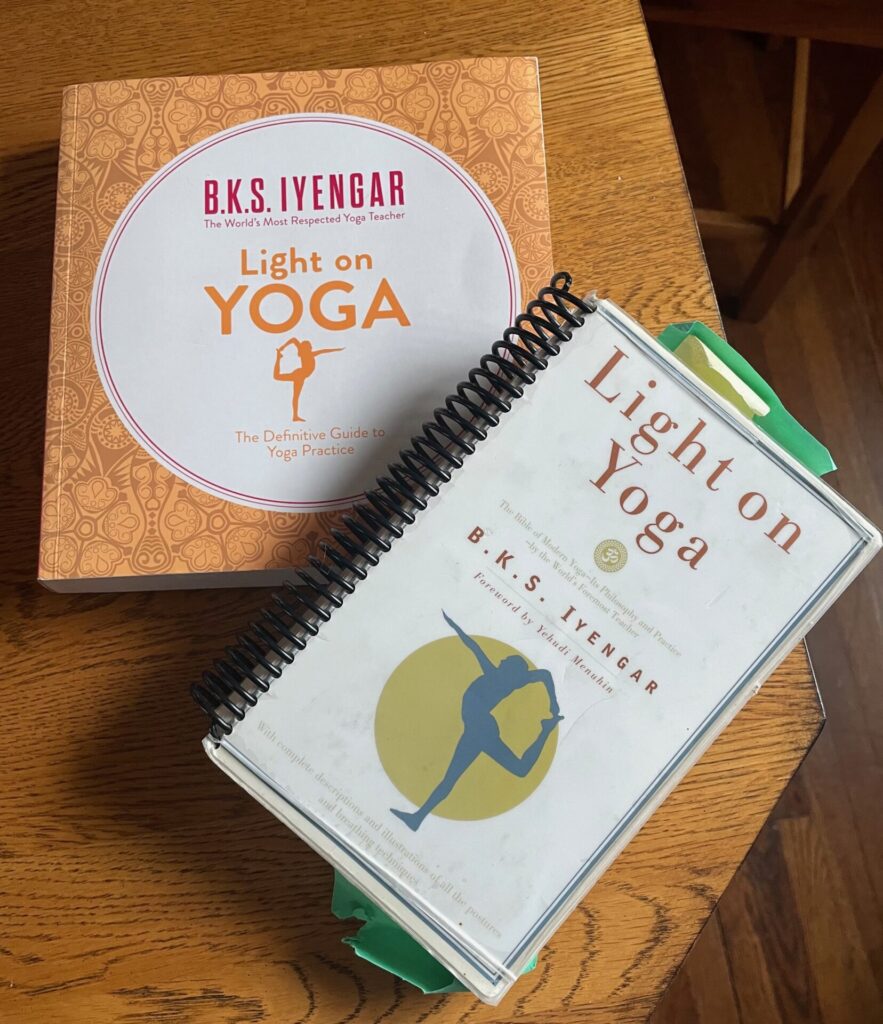What Is Yoga?

A student of mine asked what could be read or studied between classes. And of course, my little teacher’s heart went aflutter. The only book this student owns is “Light on Yoga” by BKS Iyengar, so what better place to start? As the oldest book by BKS Iyengar, first published in 1966, it is clear the method and approach to asana has evolved. In this text there is no use of props that are now so popularly used, and it contains many poses that have been adjusted into countless variations for the myriad of bodies that made their way in front of Mr. Iyengar during his lifetime of teaching.
However, the Introduction of “Light on Yoga” is a lasting and very thorough explanation of Yoga and its many facets of practice.
“As a well cut diamond has many facets, each reflecting a different color of light, so does the word yoga, each facet reflecting a different shade of meaning and revealing different aspects of the entire range of human endeavor to win inner peace and happiness.” (BKS Iyengar – Introduction to Light on Yoga)
Diving into this text again, I am taken aback by the amount of information that BKS Iyengar puts into this one book. So, I am excited to share this reading with students who might have a “Light on Yoga” lying around somewhere. Or, maybe you are just being introduced and have a curiosity about the overall approach and philosophy of yoga. I cannot use page numbers as there are many copies with different formats, so each week I will put a range of what we will cover so that you may read along. I will weave concepts into my classes, but even if you are not in one of my classes, the reading will support any yoga practice you may have.
The Forward is written by Yehudi Menuhin, arguably the first most famous practitioner under BKS Iyengar and one who brought him to Western recognition. There is an old BBC video of an interview with the two of them here https://yogamemories.com/yehudi-menuhin-and-his-guru-on-the-bbc/ . In the forward, there is a beautiful quote to highlight Menuhin’s experience of both BKS Iyengar specifically and the yoga practice in general.
“Yoga, as practiced by Mr. Iyengar, is the dedicated votive offering of a man who brings himself to the altar, alone and clean in body and mind, focussed in attention and will, offering in simplicity and innocence not a burnt sacrifice, but simply himself raised to his own highest potential.
It is a technique ideally suited to prevent physical and mental illness and to protect the body generally, developing an inevitable sense of self-reliance and assurance. By its very nature, it is inextricably associated with universal laws : for respect for life, truth, and patience are all indispensable factors in the drawing of a quiet breath, in calmness of mind and firmness of will.” (Yehudi Menuhin – Forward of “Light on Yoga” by BKS Iyengar)
What is Yoga then? I often say that if I asked 10 different students what their definition was, I would get 10 different answers and they would all be right. To Mr. Iyengar’s point above, yoga is a many-faceted practice with meanings that can encompass the “entire range of the human endeavor”. From artists to scientists, to philosophers and athletes, everyone has a facet of yoga to reveal. The question is can we turn that multi-faceted diamond and be willing to look at the other facets too? The following “definitions” that BKS Iyengar highlight in the first pages of the Introduction show this range of facets from physical will, to mental and intellectual clarity, to sensory training and the quiet consciousness of the soul.
- The word Yoga is derived from the Sanskrit root yuj meaning to bind, join, attach and yoke, to direct and concentrate one’s attention on, to use and apply. It also means union or communion.
- it means the disciplining of the intellect, the mind, the emotions, the will … it means a poise of the soul which enables one to look at life in all its aspects evenly
- Yoga has also been described as wisdom in work or skillful living amongst activities, harmony and moderation.
- steady control of the senses and mind has been defined as Yoga
- in Patanajali’s Yoga Sutras, the second sutra in the first chapter gives the “technical definition” as ‘yoga citta vrtti nirodha’, translated as the restraint of mental modifications or fluctuations within the consciousness
So, whether you come to yoga for physical reasons, mental reasons, emotional reasons, spiritual reasons, or for no reason other than it just helps you connect better to your own experience, then great! But, yoga invites us to explore our limits and to adventure beyond our current expectations. That is the journey BKS Iyengar begins to take you on next in “The Stages of Yoga”.